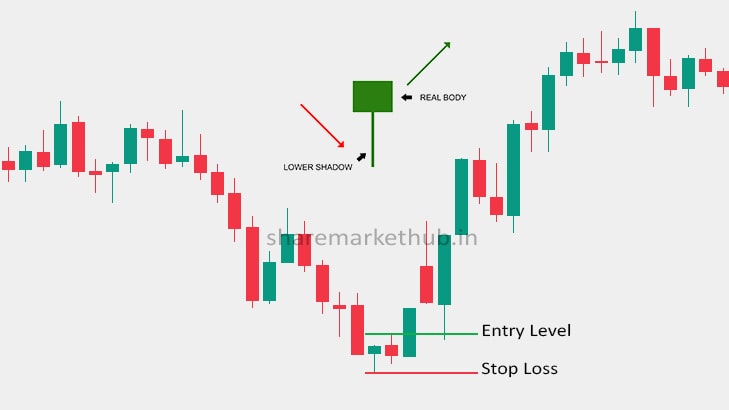
A Bearish Harami is a two-candlestick pattern found in technical analysis, typically indicating a potential reversal in an upward trend. It’s considered a bearish reversal pattern and occurs when:
- First Candlestick (Bullish): The first candle is a large white (bullish) candle that is part of an uptrend.
- Second Candlestick (Bearish): The second candle is a smaller black (bearish) candle that is completely contained within the body of the first candle.
Characteristics of a Bearish Harami:
- Uptrend Preceding the Pattern: The Bearish Harami occurs after a clear uptrend.
- First Candle (Bullish): The body of the first candle is long and white, showing strong buying pressure.
- Second Candle (Bearish): The body of the second candle is smaller and black, indicating indecision or a potential reversal.
- Second Candle Within First Candle: The body of the second candle fits completely within the body of the first candle, indicating a contraction in price movement and potentially weakening momentum.
Interpretation:
- The Bearish Harami suggests that the upward momentum is slowing down, and the trend might be reversing.
- Traders often look for confirmation of the bearish reversal in subsequent trading sessions, such as a third bearish candlestick or other bearish technical indicators.
Example:
- First Day: The market is in an uptrend, and a long white candle forms, closing higher than it opened.
- Second Day: A smaller black candle forms, opening higher than the previous close but closing lower within the body of the first candle.
How to Trade:
- Identify the Pattern: Look for the Bearish Harami in an uptrend.
- Wait for Confirmation: Look for additional bearish signals, such as a third bearish candle or other technical indicators.
- Set Entry Point: A common entry point is below the low of the second candle.
- Set Stop-Loss: Place a stop-loss above the high of the first candle to manage risk.
- Set Target: Use previous support levels or a predetermined risk-reward ratio to set your target.







